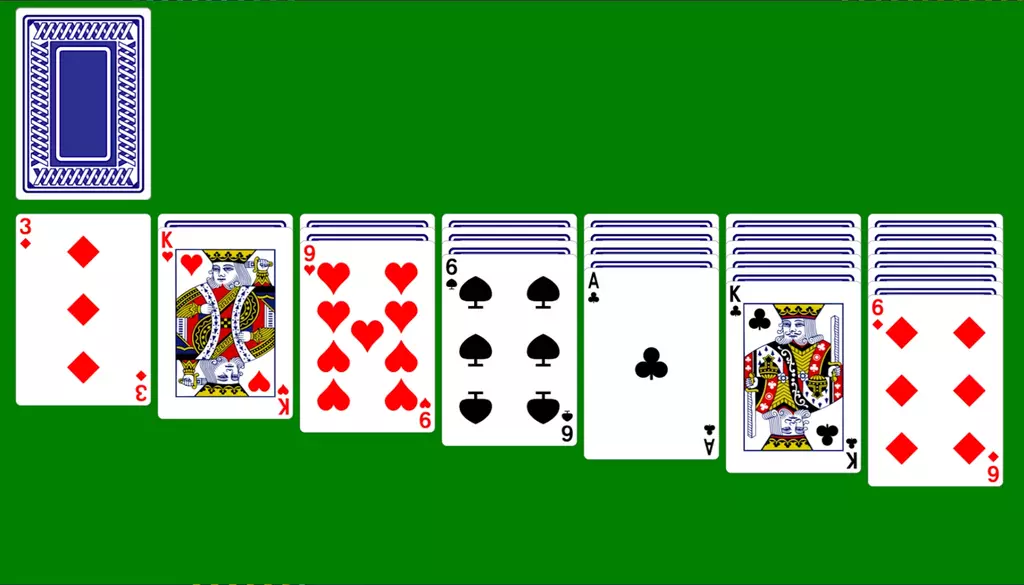How to Play Klondike Solitaire

Playing Klondike Solitaire can feel like stepping into a timeless puzzle—just you, a deck of cards, and the quiet challenge of clearing the board. Long a favorite of office breaks and casual gaming sessions, Klondike has maintained its popularity because it’s easy to learn and endlessly replayable. In this guide, I’ll walk you through everything you need to know: the initial setup, the core rules, and some helpful hints to boost your chances of winning.
What You’ll Need
All you need is a standard 52-card deck (or a digital version online). If you’re playing with physical cards, make sure they’re well-shuffled.
Initial Setup
-
Layout the Tableau: Deal out seven columns of cards from left to right. The first column has one card face-up, the second has one face-up card on top of one face-down card, and so on until the seventh column has one face-up card atop six face-down cards. In total:
- Column 1: 1 card face-up
- Column 2: 1 face-down + 1 face-up
- Column 3: 2 face-down + 1 face-up
- ...
- Column 7: 6 face-down + 1 face-up
-
Stock and Waste Pile: The remaining cards after setting up the seven columns go into the Stock pile (face-down). You’ll flip cards from this pile to a Waste pile as you try to find playable moves.
-
Foundations: These are the four empty spots at the top of your layout (or just an area you set aside) where you’ll aim to build up suits in ascending order, from Ace through King.
When you’re done, you’ll have a neat arrangement: seven columns fanning out below the four empty Foundation spots, and a Stock pile from which to draw, place cards on the Waste pile, and hopefully move everything up to the Foundations.
The Rules of Movement
- Foundation Stacks: Each Foundation pile must start with an Ace and then continue upwards by suit (A, 2, 3, ..., Q, K).
- Tableau Columns: Cards in the tableau can be rearranged in descending order with alternating colors. For example, a red 6 on top of a black 7, then a black 5 under the red 6, and so forth.
- Uncovering Cards: Whenever you move a face-up card away from a column, you can flip the next face-down card in that column. Revealing new cards creates opportunities to make more moves and ultimately free up Aces and other critical pieces you need for your Foundations.
- Empty Columns: If you clear out an entire tableau column, you can move a King (and any cards arranged beneath it) into that empty space. This provides a strategic advantage, as Kings effectively act like a key to unlock more tableau space.
Drawing from the Stock
When you can’t make any more moves on the tableau, turn over a card from the Stock onto the Waste pile. You can only play the top card of the Waste, moving it to either the tableau or directly to a Foundation if it fits. If you run out of Stock cards, flip over the Waste pile to become your new Stock and continue.
Strategies for Success
- Free Aces Early: Try to uncover and move Aces to the Foundations as soon as possible. Aces start your Foundation piles, allowing you to build upwards.
- Build on Foundations Gradually: Move cards to the Foundations in a timely manner, but don’t rush. Sometimes you need certain cards in the tableau for rearranging sequences.
- Don’t Waste Moves: Before you draw from the Stock, make sure you’ve exhausted moves in the tableau. Good sequencing can prevent you from boxing yourself in.
- Focus on Kings and Empty Columns: Getting a column empty is a significant milestone. Move Kings into empty columns quickly to open up spaces for reorganizing your tableau.
Patience and Practice
Klondike Solitaire often depends on luck—some deals are just harder to solve. The key is to practice and refine your approach: learn the standard card sequences, manage your Stock turns efficiently, and pay attention to when it’s best to move cards up to the Foundations or keep them in the tableau.
Over time, you’ll develop an intuitive sense of when to hold onto certain cards and when to let them go. Every game will sharpen your ability to visualize the steps needed to arrive at a cleared board.
Final Thoughts
Klondike Solitaire is more than just a simple card game; it’s a mental exercise in planning ahead and adapting to changing circumstances. With a proper understanding of the layout, rules, and some strategic insights, you’ll find yourself conquering the game more often—and enjoying the journey along the way.
If you’re new, start slowly: set up a physical deck at your desk or open a digital version online. Test out some strategies, and don’t be discouraged by early failures. Each round teaches you something new, bringing you closer to that satisfying moment when all four Foundations are neatly stacked from Ace to King. Happy playing!